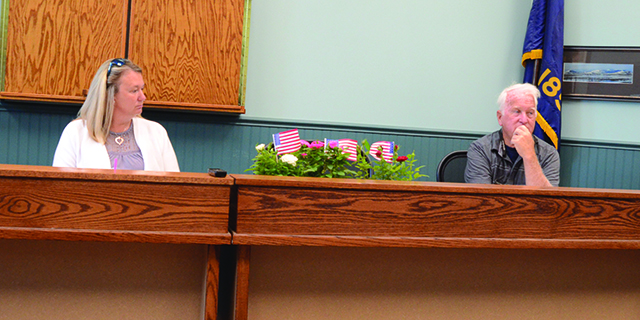Can Eastern Oregon attract Portland refugees?
Published 6:04 am Tuesday, June 7, 2016
Like most Americans, I used the long Memorial Day weekend to enjoy our wonderful country.
I traveled to Montana to enjoy the sights and lack of sounds, and along the way met some curious Portland refugees.
Trending
One of them was BT Livermore. Livermore is a well-known and talented sign painter, illustrator and designer who has lived and worked in Portland since 2005. Originally from Minnesota, Livermore moved to Rip City because artist space was affordable and the city appreciated and supported his work. While there, he made Portland a better place — visually, culturally and economically.
But rising costs are pushing Livermore, and people like him, out of Portland. The large spaces needed for collectives like Magnetic North, which he helped start, are quickly becoming too expensive. Letterpress operators and creators of all stripes are unable to make a go of it as rents rise and rise again.
Livermore thinks he will leave Portland — that he doesn’t have much of a choice — and is considering options. He thought about heading back home to Minneapolis, but the pressures that are exploding in Portland are doing the same thing there. He considered Butte, Montana, where vacant historic buildings can be had for back taxes, but finding customers can be difficult in an economically depressed town of 30,000. He considered Los Angeles, where far-off suburban locales can still be expensive, but the pool of potential customers is much larger even than Portland.
He hasn’t made a decision. The next stop is unknown — which offers feelings of anxiety and excitement.
But it’s worth considering if Livermore and other pushed-out Portlanders would want to relocate in Eastern Oregon, where populations and economic development have been stagnant or dropping for decades.
Because it’s not just mustache wax companies who are fleeing Portland prices. There are restaurateurs and brewers and other entrepreneurs — the people who helped Portland become Portland. That of course has its pros and cons, and no one wants Eastern Oregon to turn into the Willamette Valley. That would be terrifying.
Trending
But there is no denying Portland is rich and getting richer, a growing metropolitan area where housing prices are rising faster than anywhere in the nation and more than 1,000 people a month move to town.
Travel Pendleton realizes that the Round-Up City has lot of the things that the young people are flocking to Portland for. It has authenticity, history, a lively downtown, arts, music and makers — leather and boots and hats and more. Pendleton has proven to be an excellent stop to drop some money, whether at the Woolen Mills or Hamleys or the Great Pacific.
But could it become home to Portland refugees? People like Jordan Schnitzer think so. The successful developer and arts magnate invested $152,000 in a long-vacant Main Street Pendleton building and said he thinks climate change and overcrowding will cause the populations of places like Seattle, Portland and San Francisco to scatter inland to more livable cities — especially young families and middle-class entrepreneurs. Sounds exactly like the kind of people Eastern Oregon would love to have, right?
Yet, local governments have taken a mostly antagonistic stand against young professionals, voting and acting against bicycle lanes and marijuana businesses — even things as overwhelmingly positive as Pendleton’s weekly farmers market. Many of our cities pride themselves on being “business friendly,” but these votes show that quite the opposite is true. They may be friendly to the businesses and industries of a generation ago — the Great White Whale of American manufacturing — but they turn their back to the kind of slow, community-based development that will dictate the future.
Perhaps eastern Oregonians aren’t interested in people like Livermore. Certainly there is no interest in becoming Portland, where the culture is completely different, growth has changed the fabric of the city and many of its long-time residents are having a difficult time keeping pace.
Yet nearly every Eastern Oregon city needs to upgrade its streets and infrastructure, and not unduly burden its residents with overwhelming taxes while doing so. There is a desperate need for revitalization, and we shouldn’t be too picky about where it comes from.
Recently, the East Oregonian shared on its Facebook page an important story from The Atlantic magazine titled “The Graying of Rural America.” It spotlighted Wheeler County, where the median age of residents has jumped from 48 to 56 in just 13 years. The county has seen a 42 percent decrease in wage and salary employment since 1970 and is slowly heading toward oblivion.
No one wants Pendleton to become Portland, but no one can be excited about oblivion, either.
Some talented people are going to be saying goodbye to Portland in the next few months and years. We can stand to benefit, or again watch growth from afar.
Tim Trainor is opinion page editor for the East Oregonian in Pendleton, a sister publication of The Chieftain.








